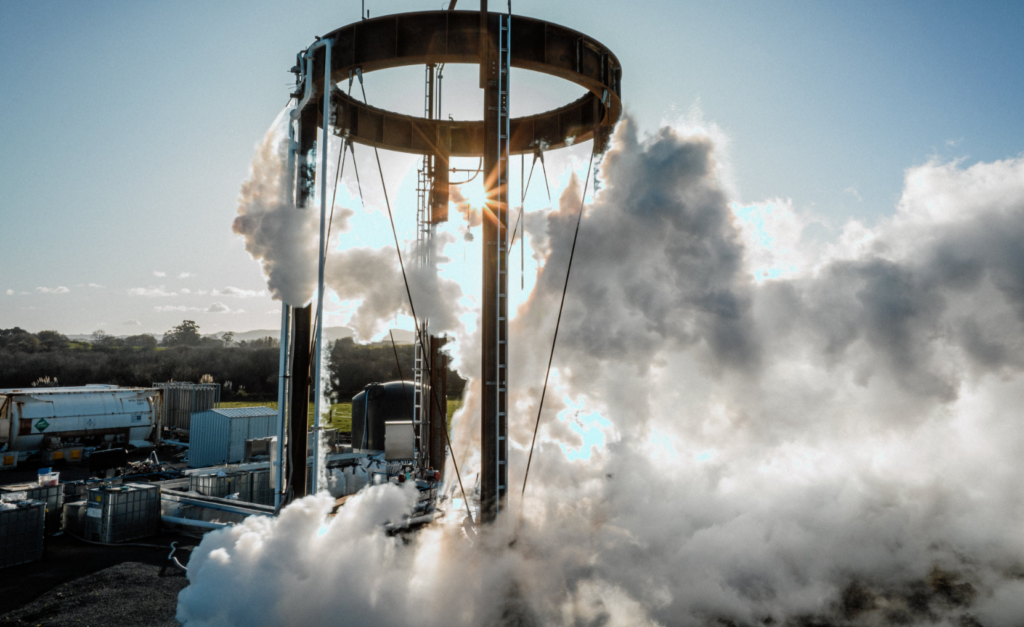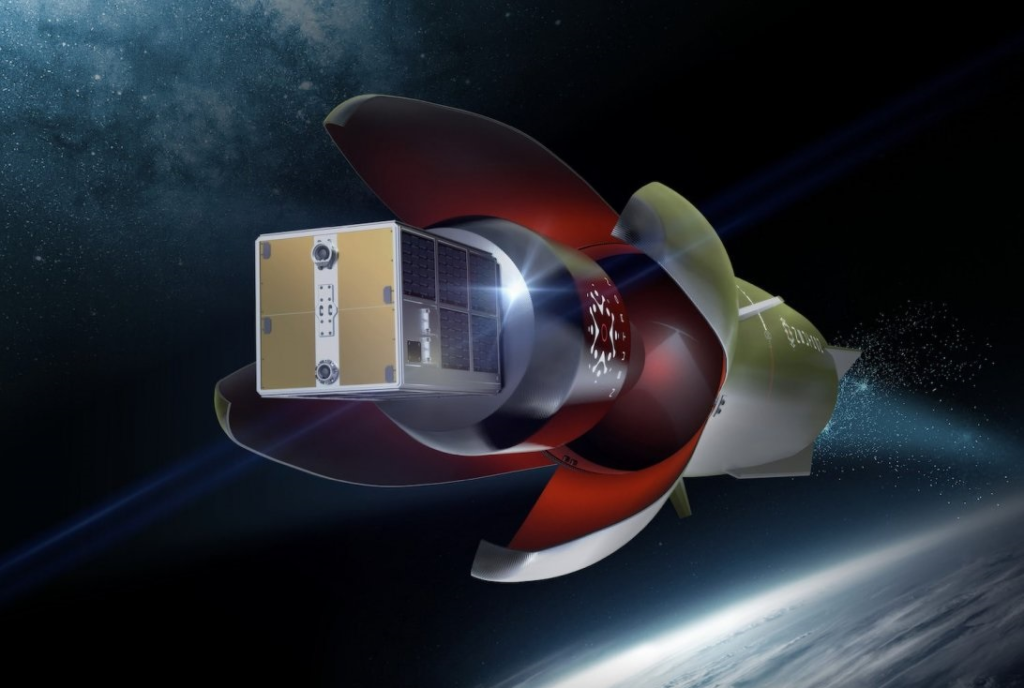
Neutron Upper Stage Testing Is About To Begin
Rocket Lab is in the process of developing a next generation launch vehicle named Neutron. Since its original announcement in 2021, we have received a few hints on its progress and a few milestones the company completed. Recently however we got a new update on exactly what the Rocket Lab team is working on regarding Neutron.
In only a few weeks from now, we can expect the first full structural and cryogenic test of the Neutron upper stage. With both the test stand complete and the upper stage test article practically ready, the two will meet very soon. This is a very big deal as it marks the start of upper stage testing and work on this rocket component.
Neutron unlike many other launch vehicles within the space industry utilizes a unique upper stage which will be put to the test soon. Here I will go more in-depth into the upcoming test, the upper stage of Neutron, what to expect in the next few days, and more.
Neutron Upper Stage

The first update we received was earlier this month on June 8th when Rocket Lab tweeted saying, “Neutron’s second stage test stand taking shape ahead of cryogenic structural stage testing” This included an image of the test stand. Even Rocket Lab CEO Peter Beck responded and commented, “Getting ready to do some big tank testing.” Based on these comments it was obvious some structural testing was right around the corner but there were no specifics provided.
Only yesterday however Rocket Lab tweeted again mentioning, “Supporting Neutron to first launch are our facilities like this Neutron test stand, ready to receive a full-scale second stage tank for structural & cryogenic testing in the coming weeks.” This included an image of the test stand with full propellant lines running around it. At this point, the test stand has been tested and is ready to receive the upper stage. In a few weeks when the upper stage is brought over and tested, it will provide a lot of valuable information to the company. Since this will be the first major test of this hardware, a lot of different things could happen.
In all likelihood, this test will reveal a few issues with the system that the Rocket Lab team will need to address as they develop Neutron. With next generation rockets, this is a common theme as they enter new territory for the first time. Rocket Lab knows small launch and Electron very well but Neutron is a different type of rocket. With this will come new challenges and variations.
The Neutron upper stage is also very different from any other rocket upper stage. Thanks to Neutron’s ‘Hungry Hippo’ fairing design, the entire second stage will be completely enveloped within the Neutron’s first stage structure and fairing during launch. Thanks to this, Neutron’s second stage is designed to be the lightest in history to enable high performance for complex satellite deployments. Typically, a second stage forms part of the launch vehicle’s exterior structure and needs to provide strength to the vehicle from lift-off, exposing it to the harsh environments of the lower atmosphere during launch. By being housed inside the first stage and ‘Hungry Hippo’ fairing, the requirement for the second stage to withstand the launch environment is eliminated and the second stage can be made significantly lighter enabling higher performance in space.
Designed as an expendable upper stage for now, Neutron’s second stage is a six-meter-long carbon composite structure with a single vacuum optimized Archimedes engine. While this won’t specifically play a big role in the upcoming test, the article will look somewhat out of place on the test stand. When it’s not enveloped within the main Neutron structure, the upper stage is very barren as described.
Focusing more on the material, Rocket Lab pioneered the use of carbon composite for orbital rockets with the Electron rocket, which has been delivering frequent and reliable access to space for government and commercial small satellites since 2018. Neutron’s structure will be comprised of a new, specially formulated carbon composite material that is lightweight, strong and can withstand the immense heat and forces of launch and re-entry again and again to enable frequent re-flight of the first stage. To enable rapid manufacturability, Neutron’s carbon composite structure will be made using an automated fiber placement system which can build meters of carbon rocket shell in minutes. The upcoming pressure test will see how much this new material and stage can handle.
Program Progress

It seems like we have been receiving more and more updates regarding Neutron and its various infrastructure. Between updates on the rocket’s components and different buildings and facilities, Rocket Lab is trying hard to get this launch vehicle operational by 2024.
For example, even looking at the Archimedes Engine schedule, we should expect a few big tests very soon based on what Rocket Lab has said. During the Investor Day Presentation last year, they expected to start preburner testing in 2022, hopefully starting full engine testing at Stennis before 2023 ends, and hoped to be able to launch in 2024. So far they have been just a few months behind this goal. Early this year in January Rocket Lab completed a big milestone in the development of Archimedes. Here they tested engine ignition on dev hardware. At the time they mentioned that the next step would be hot firing hardware with full propellant flow rates to verify injector performance. While the goal was to start full engine testing this year, it’s possible with 6 months left however the most realistic timeframe is around early next year.
While these engine tests are important, Rocket Lab has put a lot of time and money into the development of the upper stage in particular, making its upcoming tests an even bigger deal. Back in late 2021, the company was awarded a $24.35 million contract with the U.S. Space Force’s Space Systems Command (SSC) for development of the Neutron launch vehicle’s upper stage. The agreement signified Rocket Lab’s commitment to becoming a launch provider for the National Security Space Launch (NSSL) program, which launches the United States’ most critical missions.
In this case, the Upper Stage Development for the Neutron prototype project with the SSC’s Launch Enterprise, under the National Security Space Launch program using the Space Development Corps’ Space Enterprise Consortium (SpEC), will fund development of Neutron’s upper stage to support national security and defense launch capabilities for scientific and experimental satellites to the largest and most critical national security payloads. The award was part of a $75 million research and development program approved by U.S. Congress to advance the state-of-the-art in the upper stage technology of domestic launch systems.
The Upper Stage Development contract with the SSC’s Launch Enterprise recognizes the launch vehicle’s design to maximize mass-to-orbit capability, orbital insertion accuracy, and responsive dedicated launch for the U.S. government – key requirements for launch providers of the highest priority national defense and security missions awarded through the National Security Space Launch (NSSL) program. Existing NSSL launch providers include SpaceX and United Launch Alliance, and the awarding of this contract recognizes Rocket Lab as a potential NSSL Phase 3 Launch provider from 2025.
At the time Peter Beck commented, “We’re dedicated to building a next-generation rocket that will transform space access for constellations through to the most critical missions in support of national security, and it’s an honor to be partnering with the U.S. Space Force to develop Neutron. This award is a vote of confidence in Neutron and our ability to deliver low-cost, responsive, dedicated launch for the U.S. Government. We’ve built a trusted launch system with Electron, and we’ll do it again with Neutron to continue providing unfettered access to space with our new heavier-lift vehicle” he said.
Rocket Lab knows that reusability is key to enabling frequent and affordable launch, so the ability to launch, land and lift-off again has been built into every aspect of Neutron’s design from day one. It starts with Neutron’s unique shape, a tapered rocket with a wide base to provide a robust, stable base for landing, eliminating the need for complex mechanisms and landing legs.
Peter Beck also pointed out, “Neutron is not a conventional rocket. It’s a new breed of launch vehicle with reliability, reusability and cost reduction is hard baked into the advanced design from day one. Neutron incorporates the best innovations of the past and marries them with cutting edge technology and materials to deliver a rocket for the future. More than 80% of the satellites to be launched in the next decade are expected to be constellations, which have unique deployment needs that Neutron is the first vehicle to address specifically. Like we did with Electron, rather than starting with a traditional rocket design, we focused on our customers’ needs and worked back from there. The result is a rocket that is right-sized for market demand and can launch fast, frequently and affordably.”
Conclusion
Rocket Lab is only weeks away from the first cryogenic and structural testing of the Neutron upper stage. This will help determine when this rocket lifts off and whether or not it’s capable of the pressures it will be exposed to. We will have to wait and see how it progresses and the impact it has on the space industry.
